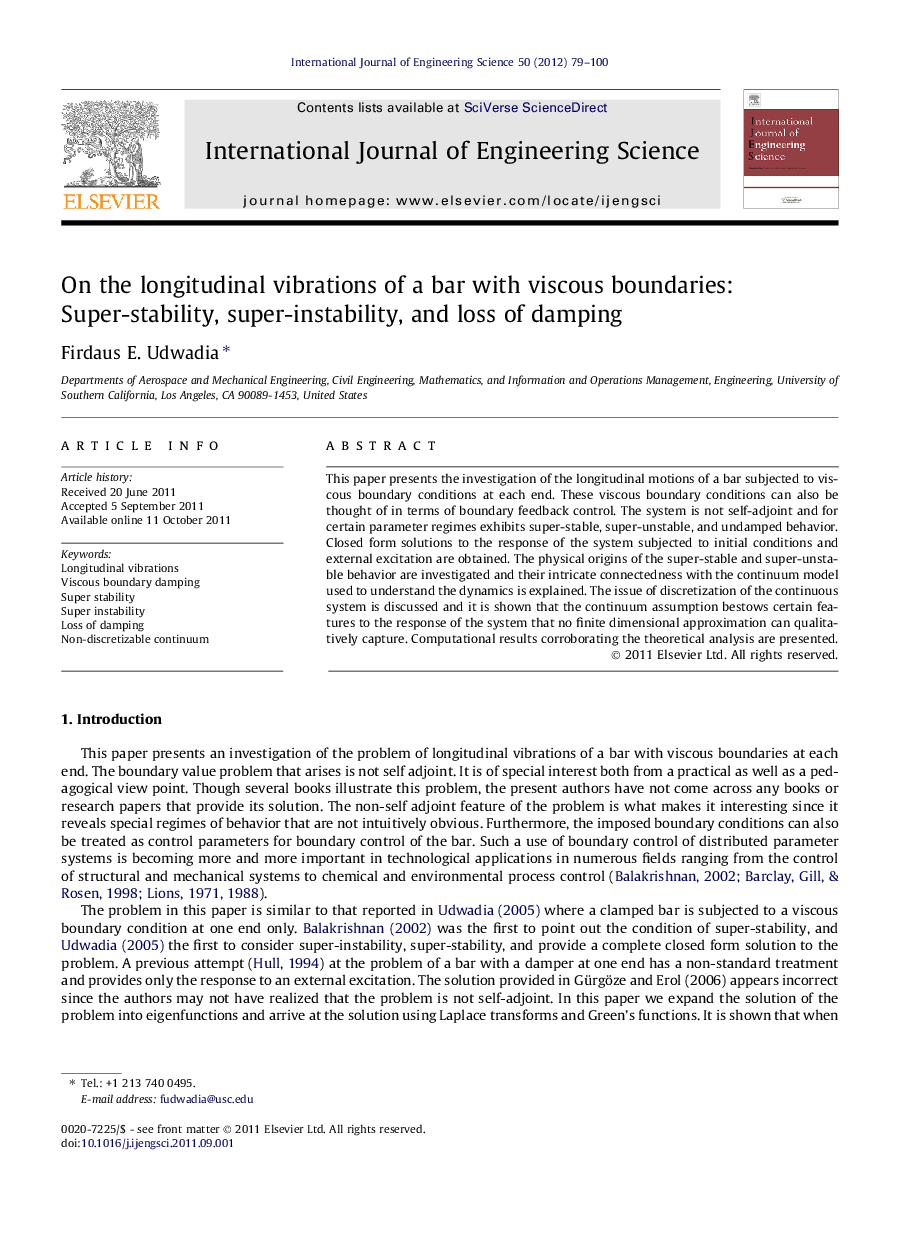| Article ID | Journal | Published Year | Pages | File Type |
|---|---|---|---|---|
| 825174 | International Journal of Engineering Science | 2012 | 22 Pages |
This paper presents the investigation of the longitudinal motions of a bar subjected to viscous boundary conditions at each end. These viscous boundary conditions can also be thought of in terms of boundary feedback control. The system is not self-adjoint and for certain parameter regimes exhibits super-stable, super-unstable, and undamped behavior. Closed form solutions to the response of the system subjected to initial conditions and external excitation are obtained. The physical origins of the super-stable and super-unstable behavior are investigated and their intricate connectedness with the continuum model used to understand the dynamics is explained. The issue of discretization of the continuous system is discussed and it is shown that the continuum assumption bestows certain features to the response of the system that no finite dimensional approximation can qualitatively capture. Computational results corroborating the theoretical analysis are presented.
► We study the longitudinal vibrations of a bar with dampers at its two ends, a problem that is non-self adjoint. ► A closed form solution is obtained and it is shown that the behavior of the response for different damping values of the end dampers is non-intuitive. ► For certain damping values, for example, the bar exhibits super-stable and super-unstable behavior. ► Such behavior cannot be described by any finite N-dimensional model of the bar no matter how large N be taken. ► It is intrinsic to the continuum nature of the bar’s model.
